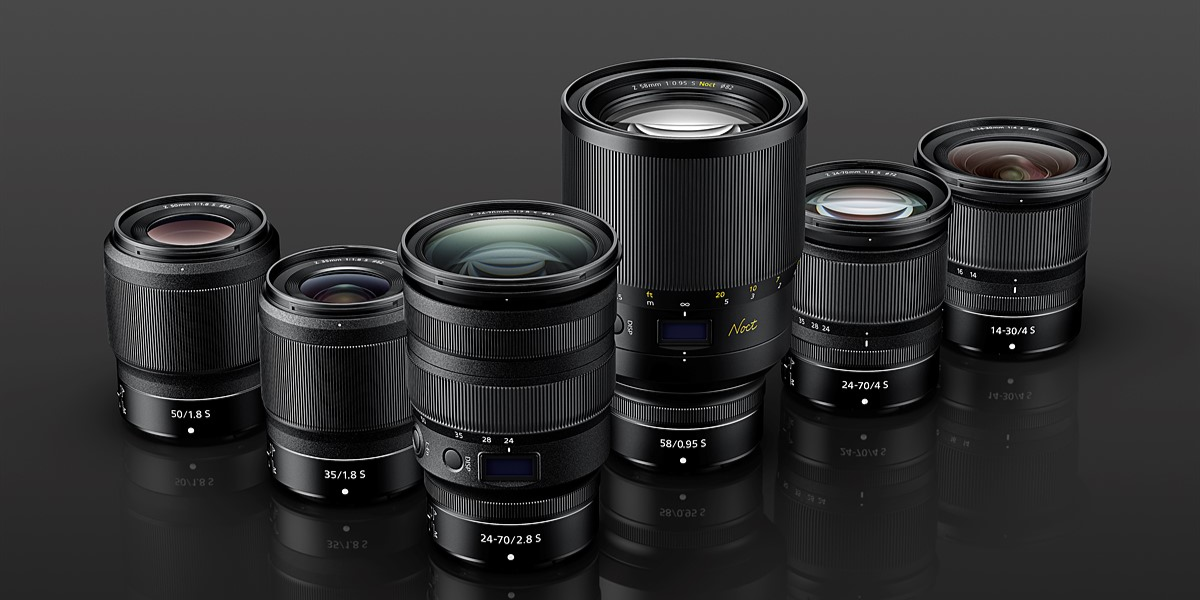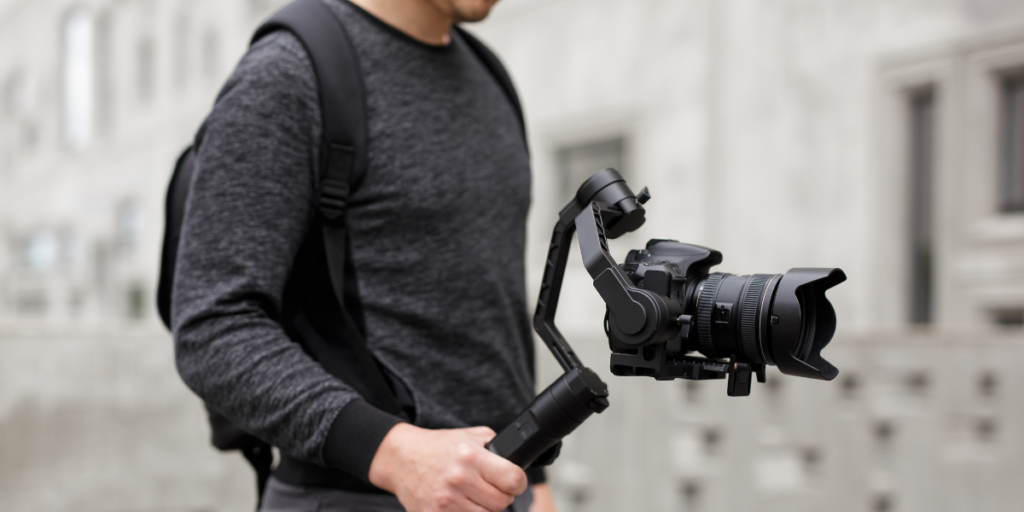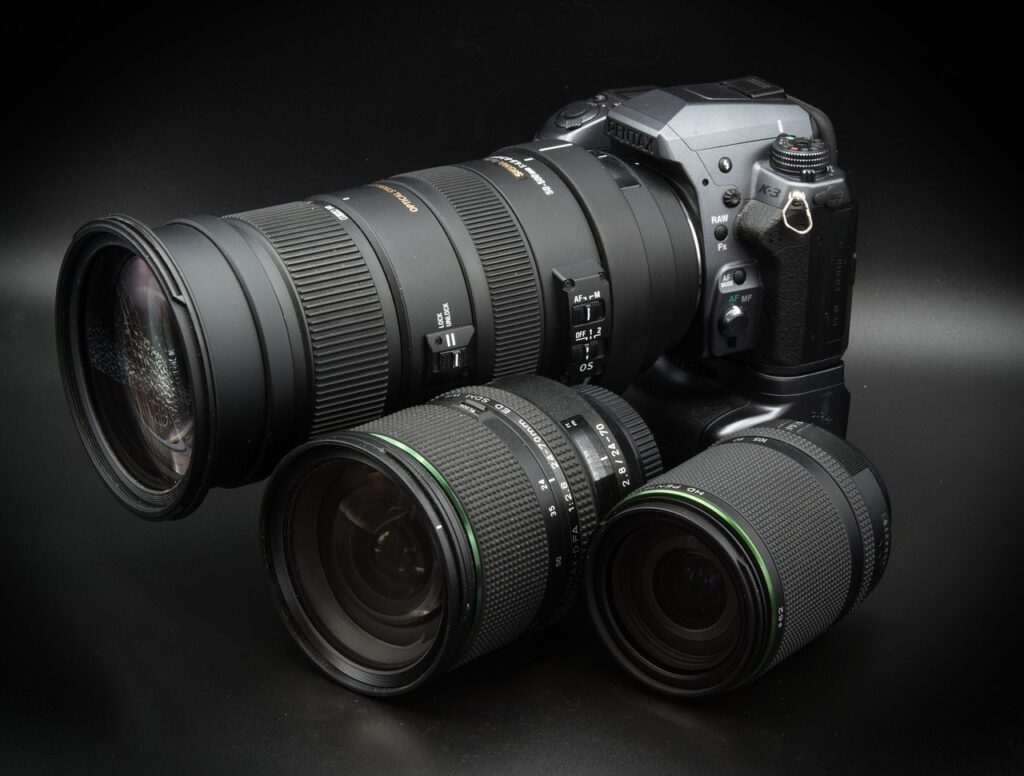- Camera
- Camera Lenses
- Camera Gimbals
- Camera Accessories
- Abs Flight Case
- Articulated Magic Arm
- Bag Case
- Batteries Power
- Blackmagic Accessories
- Camera Carry Strap
- Camera Dry Box
- Cleaning Kit
- Cups
- Dji Accessories
- Filters Accessories
- Flash Diffuser
- Gopro Accessories
- Insta360 Accessories
- Laptop Accessories
- Lens Hoods Caps
- Memory Cards
- Micro Photography
- Tripods Support
- Drone Camera
- Video Lights
- Lighting & Studio Accessories
- Pro Audio
- Studio Production
- Mobile Gimbal
- Gaming Consoles
- Apple Macbook
- Top Selling
What Are The Best Lenses For Shooting Portraits?

Choosing the right lens for your DSLR or mirrorless camera can seem overwhelming due to the variety of options. However, it’s simpler than it seems; it depends on your shooting style and needs. Different lenses are great for various types of photography, but remember, there’s no one wrong choice!
Explore this blog to learn how to select the best lenses for shooting portraits and find the right one for you.
Canon EF 85mm F/1.4L IS USM Lens (Best Telephoto Lens):
Canon is known worldwide for producing top-quality cameras and lenses for both videographers and photographers. The Canon EF 85mm f/1.4L IS USM is a prime lens ideal for portrait photography, designed with fast performance and image stabilization. As part of Canon’s L-series, this lens features advanced optics, including a glass-molded aspherical element to reduce blurring and distortion, resulting in sharper, clearer images.
Its Air Sphere Coating (ASC) helps to minimize glare and ghosting, ensuring high contrast and true-to-life colors even in backlit conditions. The lens includes a four-stop image stabilization system to reduce camera shake for sharp handheld shots.
What’s more interesting about this lens is that it also uses a ring-type Ultrasonic Motor (USM) for fast and accurate autofocus, plus full-time manual focus control for precise adjustments. Built to withstand tough conditions, the 85mm f/1.4L is dust- and weather-resistant, with a fluorine coating on exposed elements to protect against dirt and moisture.
Features:
- EF Mount Lens for Full-Frame Cameras
- Aperture Range: f/1.4 to f/22.
- Optics: Includes one aspherical element for reduced distortion.
- Coating: Air Sphere Coating cuts down on glare and ghosting.
- Autofocus: Ring-Type Ultrasonic Motor for fast, accurate AF.
- Image Stabilization: Built-in optical stabilization for steady shots.
- Durability: Weather-sealed with a fluorine coating for protection.
- Smooth Bokeh: Rounded 9-blade diaphragm.
If you’re impressed by the features of this lens, you can find an excellent price on camera lenses in Pakistan at Golden Camera. Don’t miss out, order now!
Sigma 24mm f/1.4 DG HSM Art (Best Wide-angle Portrait Lens)
The L-mount 24mm f/1.4 DG HSM lens is a wide and quick prime from Sigma’s acclaimed Art line within their Global Vision Series. It comes with an advanced optical design and a durable build.
It has 3 “F” Low Dispersion (FLD) elements and 4 Special Low Dispersion elements. It reduces chromatic aberrations. Additionally, two aspherical elements (one at the rear) minimize various distortions and aberrations.
This lens comes with a 15-element and 11-group design. It ensures that you are getting consistent brightness and sharpness, even at the wide f/1.4 aperture. Also, a Super Multi Coating cuts down on the flare, and ghosting improves the contrast and color fidelity.
The lens also comes with a Hyper Sonic Motor (HSM) for fast, smooth, and near-silent autofocus, with full-time manual focus for precise control. Nine rounded diaphragm blades provide beautiful out-of-focus areas, ideal for shallow depth-of-field shots.
Features
- L-Mount Lens for Full-Frame Cameras.
- Aperture Range: f/1.4 to f/16.
- Optics: FLD and Special Low Dispersion elements for reduced chromatic aberrations.
- Aspherical Elements: Two aspherical glass elements to minimize distortion.
- Coating: Multi-layer coating to cut down flare and ghosting.
- Autofocus: Hyper Sonic Motor for quick and smooth autofocus.
- Manual Focus: Manual focus for precise control.
- Bokeh: Rounded 9-blade diaphragm for smooth out-of-focus areas.
- Build: Made from thermally stable composite material for durability.
Sigma 50mm f1.4 DG HSM (Best Standard Portrait Lens)
If you’re looking to enter the world of portrait photography, Sigma’s 50mm f/1.4 DG HSM lens is an excellent choice. This fast and standard-length prime lens is designed and created for high optical performance, featuring 3 Special Low Dispersion elements and one molded glass aspherical element. These elements, combined with an advanced optical design, reduce chromatic aberrations and sagittal coma flare, ensuring sharp, clear images.
The lens has a huge diameter that is paired with a floating system. This will help correct vignetting and maintain brightness at the edges. There’s a next-level Super Multi Coating that helps reduce flare and ghosting and improve contrast and color accuracy.
On the other hand, this lens is equipped with a Hyper Sonic AF Motor and optimized autofocus algorithm for fast, smooth, and quiet performance in various situations. Plus, it allows full-time manual focus control, letting you refine focus by simply turning the focus ring.
Features
- Aperture Range: f/1.4 to f/16.
- Optics: One molded glass aspherical element and three Special Low Dispersion elements.
- Coating: This coating turns down the flare and ghosting.
- Design: A floating system and large-diameter design are used for improved image quality.
- Autofocus: The AF gives you a quick and seamless autofocus.
- Bokeh: Rounded nine-blade diaphragm to please out-of-focus areas.
- Build Thermally stable composite material for durability.
- Mount: Brass bayonet mount.
- Compatibility: Works with Sigma USB Dock for lens customization.
How To Pick The Best Lenses For Portrait Photography
When selecting portrait lenses, focus on two main factors: focal length and depth of field, which both significantly influence your shots.
- Focal Length: Short telephoto lenses (85–135mm) are ideal for flattering headshots with smooth background blur, while wider lenses (50mm, 35mm, 24mm) suit group or couple portraits with dynamic compositions.
- Depth of Field: Wide apertures create a soft, dreamy look but avoid overly shallow focus. Longer focal lengths ensure smooth blur while keeping the subject sharp.
- Bokeh: Unique background blur effects, like “swirly” or “soap-bubble” bokeh, can enhance portraits artistically.
Pro Tip: Start with a budget-friendly 50mm lens for excellent results.
Tips For Using Portrait Lenses
Explore our tips for using portrait lenses effectively to enhance your photography skills and create stunning images!
Pick the right background: Go for neutral or uncluttered settings to avoid distractions. You can add context with relevant items like instruments or tools.
Prepare your subject: Build comfort with light conversation and recommend neutral or dark clothing to draw attention to the subject.
Master posing: Offer simple guidance for natural poses, use angles creatively, and incorporate props to ease tension.
Go for good lighting: Use natural daylight, avoid harsh shadows, and position subjects near windows for softer illumination.
Pick the right focal length: A 50mm lens ensures accurate portraits with minimal distortion. Adjust based on space and desired effects.
Blur the background: Use a large aperture (low f-number) for a shallow depth of field, with f/4 being ideal. Utilize Aperture Priority Mode for adjustments.
Enhance background blur: Increase the distance between your subject and the background for a smoother effect.
Expose for the face: Adjust exposure compensation to properly light your subject’s face, even against challenging backgrounds.
Focus on the eyes: Use autofocus points to highlight the eyes. Make sure they’re sharp and reflective for captivating portraits.
Final Thoughts
Picking up the best lens for portrait photography is key to achieving stunning results. Whether you prefer the flattering blur of a short telephoto, the versatility of a 50mm lens, or the creative possibilities of wide-angle lenses, understanding focal length, depth of field, and bokeh will take your portrait photography to a whole new level.
Remember, practice and experimentation are crucial in mastering your craft. Explore the variety of lenses available to find your perfect match, and check out Golden Camera for the best camera lens prices!


